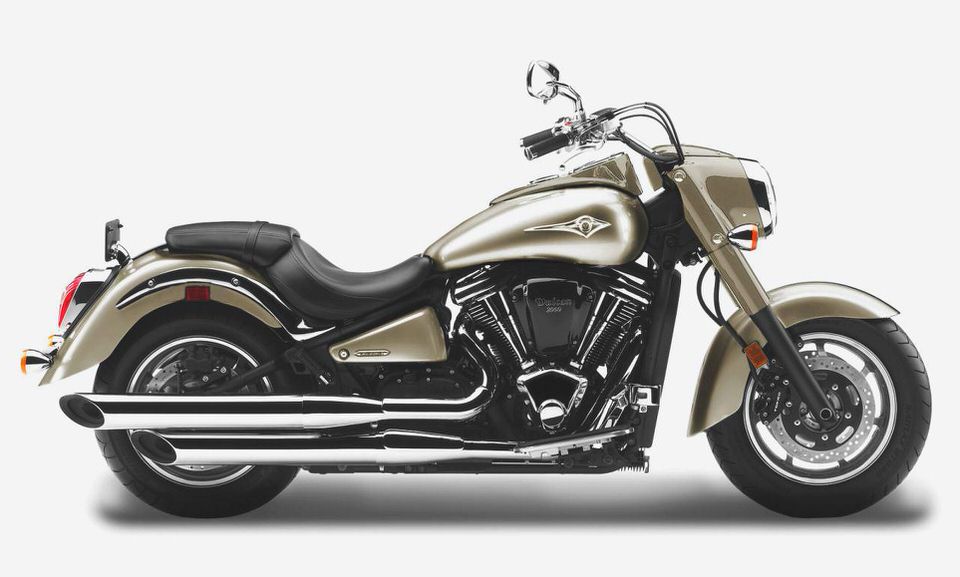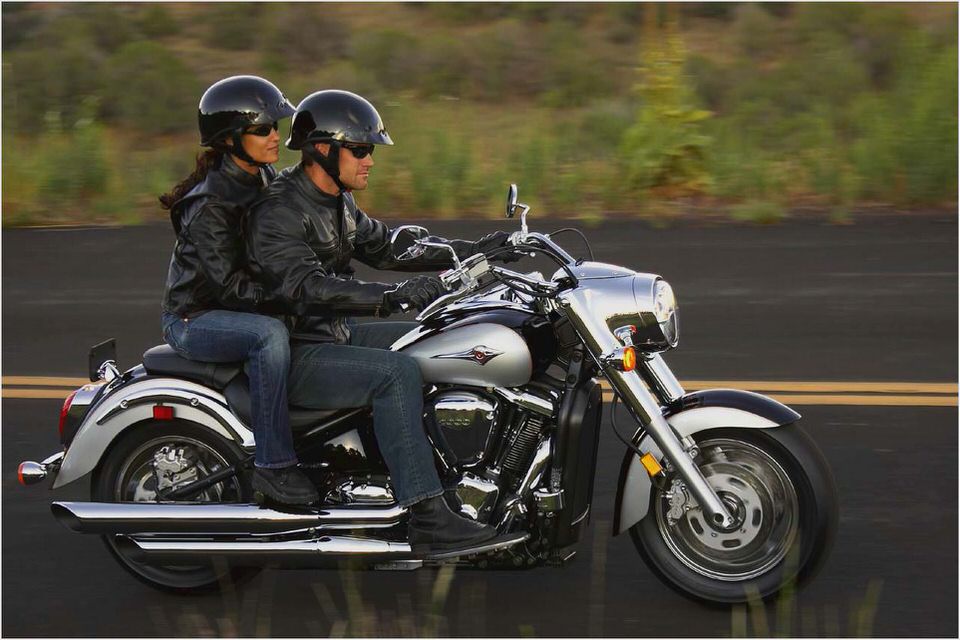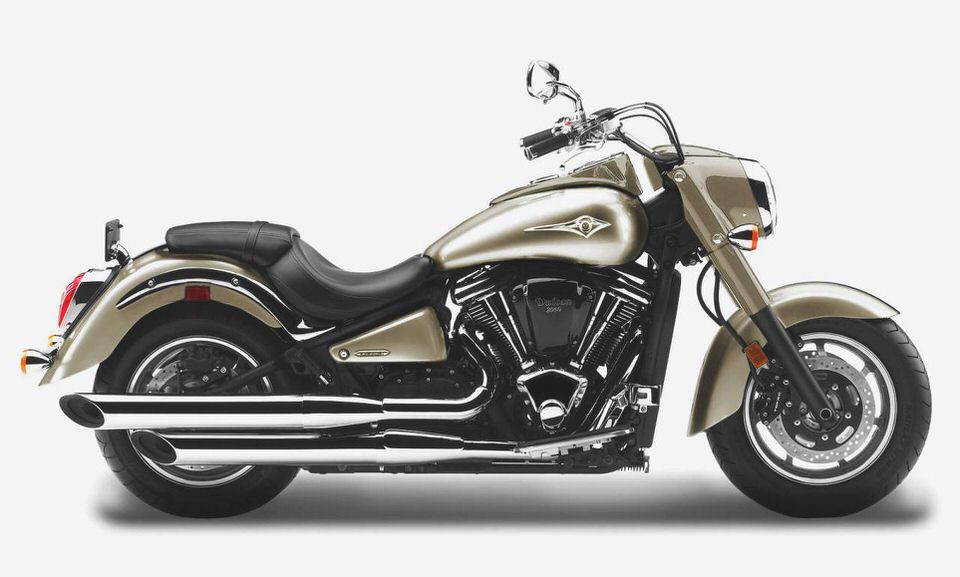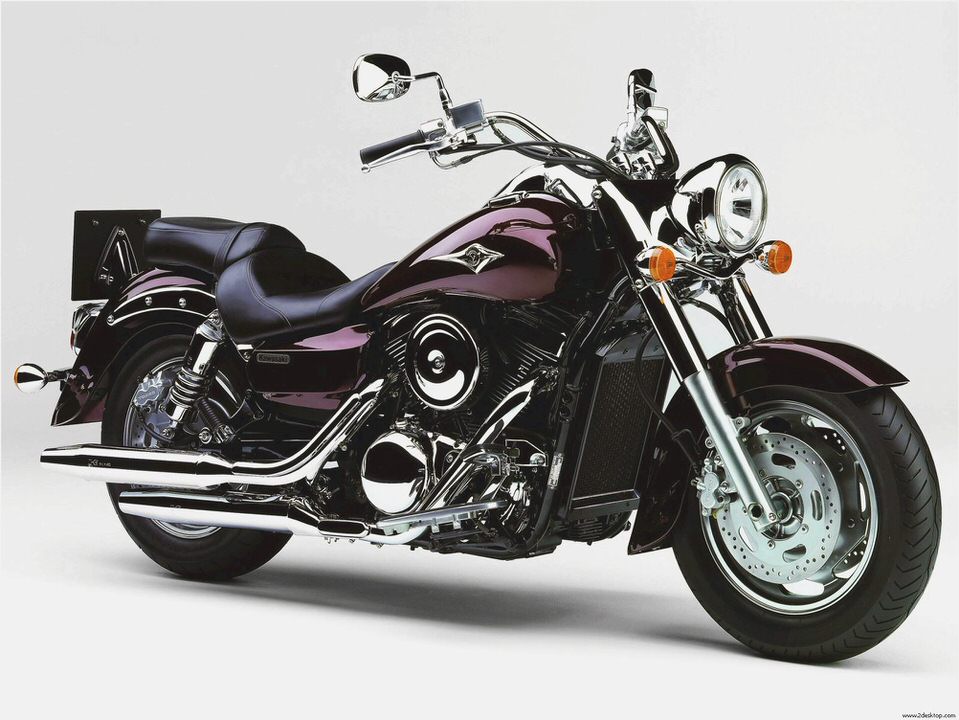
2004 Kawasaki Vulcan 2000
Technical jargon aside, the Vulcan is nothing if not a blast to ride.
Y2K? ‘Cause it Kicks Ass!
Kawasaki didn’t start the big-bore V-Twin cruiser wars, but they may have just ended it. After touring Santa Barbara County for two days during the Vulcan 2000 media introduction, one thing is clear: Team Green has thrown down the gauntlet and any manufacturer looking to top Kawasaki’s latest effort with a bigger, badder cruiser will have to put forth a monumental effort.
Don’t be misled by the moniker, the Vulcan 2000 isn’t just about size, it’s an amalgamation of torque, power, handling, and refinement all packaged into one 790-pound machine. The incredible displacement undoubtedly stands out, and there’s little question that its power and torque will bring a smile to your face. But there’s more to this package than motor much more.
The folks at Kawasaki didn’t simply set out to build the biggest production cruiser. They wanted to create an incredibly powerful and well-handling machine that is as pleasing to the eye as it is to the loins. The engineers put in ample time to ensure this bike was ridable in every manner.
The Vulcan was designed to do things other than go from point A to point B in a straight line like some of its powerful brethren. Yes, Kawasaki considered that some people enjoy touring curvaceous roads and canyon carving as well as cruising their local boulevard.
But let’s be honest, they didn’t name the bike after its displacement by accident. Nestled in the double-cradle steel frame is the 2053cc (125.3 cubic-inch) liquid-cooled V-Twin, and it’s everything you’d expect and more from a bike that is the largest production twin cylinder on the market. Basically, a twist of the throttle elicits an instant response from the rear wheel, pumping out torque that can be matched by only a handful of stock machines on the market, sportbikes included.
The arm-jerking power is evident throughout the powerband and peaks with a claimed 141 lb.-ft. of torque at 5000 rpm. While that number is measured at the crank, taking into account a 15% loss once it hits the rear tire reveals it may churn out as much as 120 lb.-ft. on a rear-wheel dyno. Even if dyno numbers are just semantics, I have the sore biceps and triceps to prove it. A claim of 116 horsepower at 5000 rpm is equally impressive as the torque.
All those digits, fudged or not, equal one thing: big fun.
Standing next to the 2000 without having ridden it, nervous energy pulsed through my veins at the thought of maneuvering the big cruiser through dense urban traffic and tight parking lots. Much to my delight, Kawasaki went to great lengths to ensure this behemoth behaved as much like a blade as the laws of physics would allow.
A low center of gravity is one major reason why the Vulcan is so easy to ride. Kawasaki opted to forgo overhead cams and instead used pushrods and four hydraulically actuated valves per cylinder to reduce engine height, helping keep mass low to the ground. We’re not insinuating the Vulcan feels small, but for a bike this heavy it moves like a 105-pound ballerina.
Cruising on the 2000 is an incredible experience, with fistfulls of torque and horsepower available in the right hand in any gear at any rpm. Passing lumbering trucks and clueless cagers on the 101 and backroads was cause for celebration because it was an opportunity to wrench the throttle open. The five-speed transmission is remarkably smooth for such a big bike and performed admirably throughout the two-day ride.
However, first and second gear are short, with first gear revving out extremely early. While cruising through town I most often found myself in second and third. Freeway riding is made more relaxing by having fourth and fifth gears overdriven to reduce revs at speed.
The massive cylinders are fed by electronic fuel injection and 46mm throttle bodies, which combine for buttery smooth acceleration in any gear – well, as smooth as 141 lb.-ft. of torque can be. At the heart of the successful EFI system is a set of atomizing injectors which split the air/fuel mixture into an ultra-fine mist, making the engine burn cleaner and more efficiently.
As the bike exhales it emits a superb exhaust note for a stock cruiser. The aural pleasantries of the Vulcan exhaust is due in large part to a single-pin crankshaft which provides V-Twins with that classic loping potato-potato sound. Creating a good exhaust note while simultaneously eliminating vibrations is usually an engineering nightmare, but Kawasaki did an excellent job of quelling the majority of shake with dual counterbalancers and a rubber-mounted engine.
Keeping the ride smooth on a bike that weighs nearly 800 pounds isn’t an easy task, but the suspension of the 2000 is quite good, soaking up bumps and undulations with ease. The traditional 49mm fork offers 5.9 inches of travel up front while a direct-action single shock smoothes out the load in the rear with its 3.9 inches of stroke.
At 790 pounds, the Vulcan is no light-weight, but a low center of gravity combines with excellent suspension to make this a nimble cow.
The suspension doesn’t seem that remarkable until the Vulcan is pushed hard through the twisties. With nearly 800 pounds to track through high speed corners, the suspension and rigid frame does a good job of eliminating chassis flex. Unlike most cruisers which become a swaying mass of iron and chrome in tight corners, the Vulcan tracks well through the twisties and it provides decent feedback.
A sportbike the 2000 is not, but it certainly feels as quick through corners as most any big-bore cruiser I’ve ever ridden. Ground clearance is about typical for a sporty cruiser, and the Vulcan remains stable even when the floorboards erupt in a shower of sparks.

Ensuring the power of the Vulcan is translated to the tarmac is a set of fat tires mounted on 16-inch cast aluminum rims. Up front, a hefty 150/80 tire keeps the 2000 in the right direction while the belt drive punishes an ultra fat 200/60, the widest tire available on a large-production cruiser.
Slowing the Vulcan is a pair of 300mm discs with 4-piston calipers up front, while a single, 320mm disc with a dual-piston caliper provides extra stopping power from the rear. The brakes were spot-on during my two-day experience and rarely did I find myself looking for additional support from the rear binder. When I did want to scrub off speed, the trio brought the hulk to an abrupt halt.
Technical jargon aside, the Vulcan is nothing if not a blast to ride. The 66.6 inch wheelbase is perfect for taller riders who want to stretch out on the road. Relaxed, raked-back handlebars leave the arms and hands at a comfortable riding position, and it works in harmonious union with the bucket-style saddle. The low-slung seat rests 27.2 inches above the ground and provides enough comfort to keep your backside happy on long rides.
Feet rest comfortably on the stock floor boards, and the oversized foot controls ensure solid shifts and braking.
The levers and controls are made from quality components and they function beautifully. Aiding in the clean appearance is the low-profile speedo, which sits atop the gas tank with a gas gauge and a series of indicator lights nestled below on the same apparatus. The stretched 5.5 gallon gas tank gives the 2000 a clean, classic look and also provides ample fuel capacity for riders who plan to load up and leave for the day without making frequent stops at a filling station.
Kawasaki opted to forgo overhead cams and instead used pushrods and four hydraulically actuated valves per cylinder to reduce engine height, helping keep mass low to the ground.
Aesthetically, Kawasaki made great strides for the metric cruiser market. The first thing that stands out about the 2000 is the smooth integration of the headlamp into the chrome shroud around the fork. The four-bulb headlamp is a stunning functional and design feat, but it may alienate those with more conservative tastes.
Inside the shroud resides an unusual lamp configuration, a single light (normal mode) tops three horizontal projector-beam bulbs which activate when switched to high-beam mode.
Kawasaki emphasized the mega Vulcan is not an attempt to lure any customers away from The Motor Company. Instead the Vulcan 2000 is an opportunity for people to experience a combination of power and grace in a package that lists for $14,499, a whole lotta bike per dollar.
For those who ride for brotherhood and companionship, the Vulcan 2000 isn’t a good choice it’s much too fast and fun to involve other riders with regularity. Triumph’s massive new 2.3-liter Rocket lll can compete in terms of displacement, but its base price is $1500 higher.
The power cruiser market, once non-existent, has quickly become saturated with offerings from many of the world’s most recognizable manufacturers. However, when the trends and fads die down, there will likely be only a few bikes with true staying power. Something tells me that Kawasaki’s Vulcan 2000 is a machine that wil keep people talking for years to come.



- Kawasaki India To Launch ZX-10R, ZX-14R Ninjas In 2013 MotorBeam -…
- 2014 Kawasaki Versys 650 ABS Specs and Review Fast Bikes – Fast Bikes
- Kawasaki Kx 500 History Owners Guide Books
- Patrick’s GPZ 900R Page. Die Geschichte der Kawasaki GPZ-Reihe
- MD First Ride: 2006 Kawasaki Vulcan 900 Classic and Classic LT …

